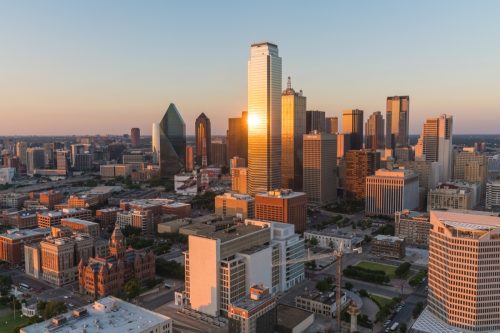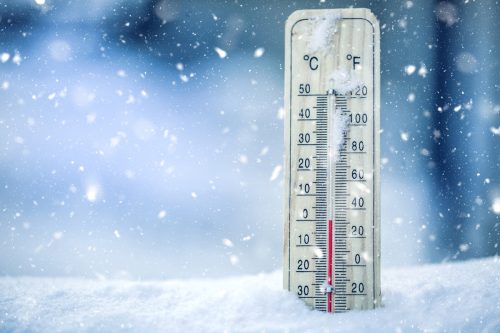Soaring Temps This Week Could Break 300 All-Time Records, Meteorologists Say

Those of us who have been waiting for the winter weather to depart should finally get our wish this week—even if only temporarily. As spring slowly makes its return, meteorologists are predicting that over 300 all-time temperature records could be broken as we close out February. Don’t get too excited, though: Colder temperatures are then likely to return once more.
“While this warmth is building in quickly, and we are expecting records through about Tuesday and Wednesday, we do get a sharp reminder once the storm moves in that, yes, it is still winter, and we still need the coats,” Fox Weather meteorologist Jane Minar said.
Read on to find out which parts of the country will be unseasonably warm this week, and how long the winter break will last.
RELATED: “Remarkable” Polar Vortex Disruptions Could Send Temps Plummeting Again—Here’s When.
Monday

To start the week, the Fox Forecast Center reveals that more than 250 million Americans will experience above-average temperatures today.
In Nebraska, both Omaha and Lincoln could have their warmest February day on record, according to Fox Weather. But more than five dozen daily record highs are expected to hit, all the way from Texas through North Dakota, Minnesota, and Wisconsin. In fact, the city of Dallas might end up seeing a high of 95 degrees today.
RELATED: New Spring Forecast Shows Which U.S. Regions Will Be Warmer and Wetter This Year.
Tuesday

Temperatures are expected to continue heating up tomorrow, too.
“This warmth is really beginning to build today across the middle tier of the country, and it continues to shift its way eastward by about Tuesday,” Minar said.
According to the Fox Forecast Center, around 243 million people in the U.S. are forecast to see above-average temperatures on Tuesday.
All-time February record highs are possible for Springfield, Illinois, and Madison, Wisconsin. Chicago is also forecast to see a high in the mid-70s on Feb. 27, while St. Louis is forecast to see a high in the lower 80s. If St. Louis temperatures hit 85 that day, it will break the record for February warmth in the city.
RELATED: “Very Active” Hurricane Season Expected This Year—Here’s Where.
Wednesday

By Wednesday, the warmth will start moving out in some areas. But much of the East Coast is still predicted to see unusual warmth: In fact, 190 million people in the U.S. are forecast to experience above-average temperatures on Feb. 28, according to the Fox Forecast Center.
Fox Weather reported that the highest potential for broken records on this day is expected across the Northeast.
The second half of the week

Colder temperatures are still expected to make their way back to many regions of the U.S. later in the week, however. According to Fox Weather, a cold front will push a cross-country storm that is likely to bring a wild temperature swing to millions.
During the second half of the week, the Fox Forecast Center predicts that temperatures will go from 20 to 30 degrees above average to 10 to 20 degrees below average in some places. This swing is expected to come with blasting winds as well, causing feels-like temperatures to dip below zero in parts of the northern U.S. by next week.